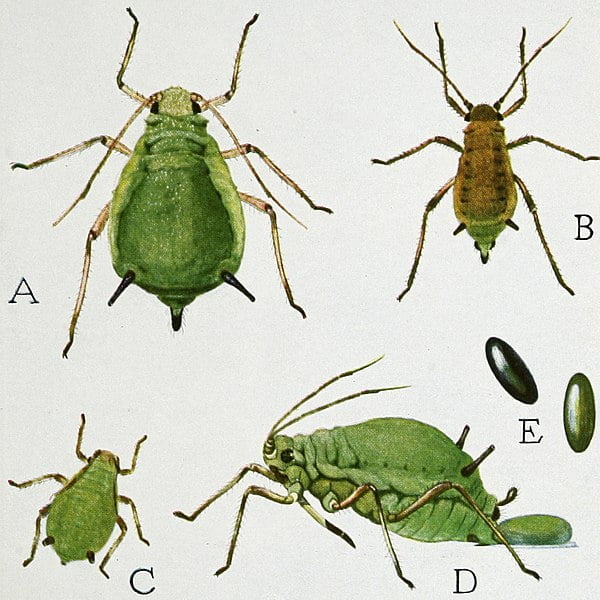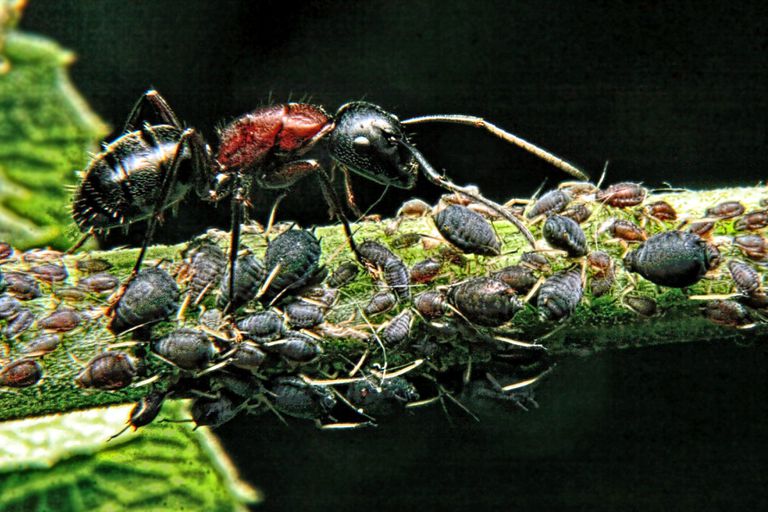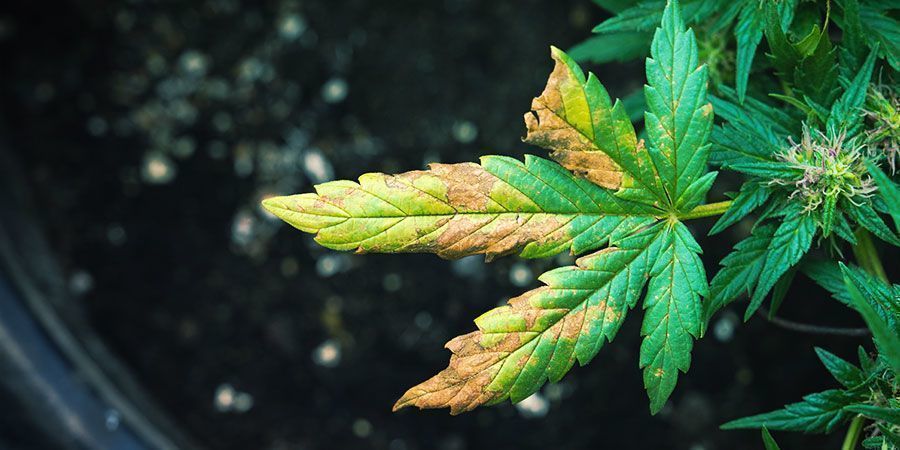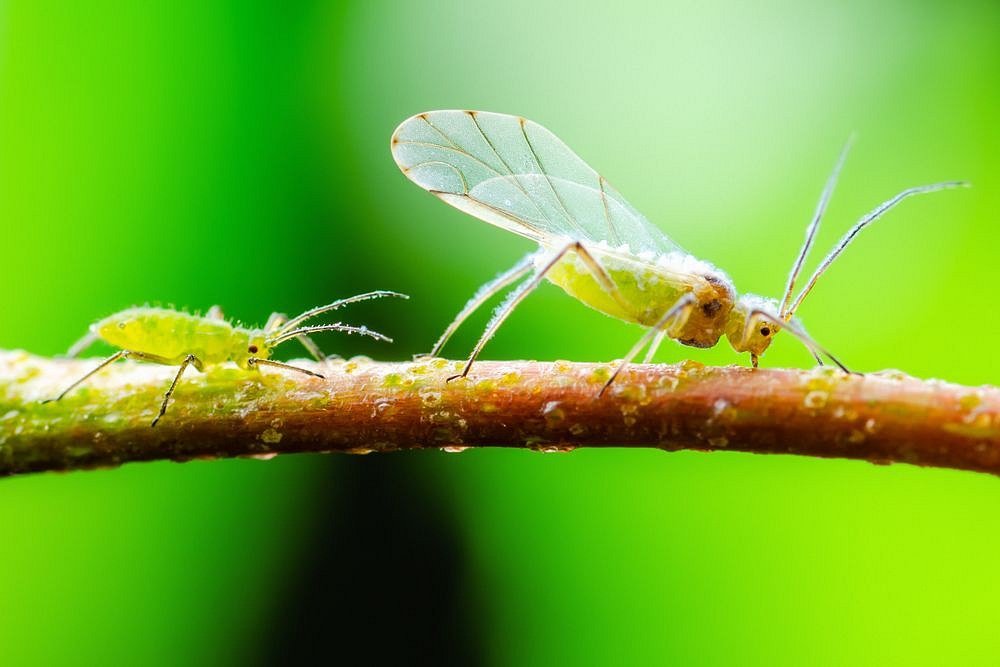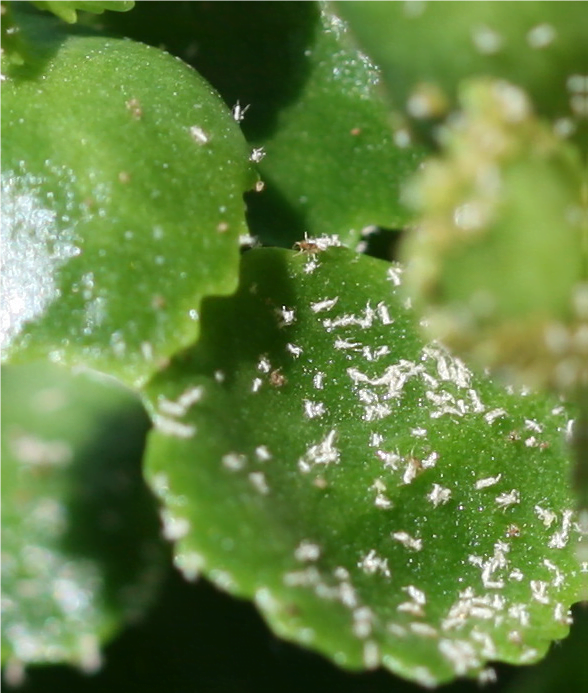English
If you grow plants, including cannabis, you’ve certainly encountered these little rascals. These pests can seriously threaten your crop. Of course, the best thing to do against infestations is prevention and early detection. You need to watch out for possible symptoms and, above all, know how to get rid of the pests. Here are some tips on how to recognise and combat pests. In the first part of our series we will focus on aphids.
Aphids
The life of Aphids
Aphids represent many species of insects very similar to each other from the same animal family. The life cycle of aphids begins in spring. The eggs laid in the autumn hatch into winged nymphs, which have no problem finding a suitable shelter on, for example, a marijuana plant. Within 7-10 days after hatching, the larva sheds its skin and wings and changes into a female, which is secured to give birth to live aphids without wings. And there are not few of them – an adult aphid produces 50-250 females in its lifetime, which in turn can give birth to more and more aphids. If you only see a few, rest assured there will be more, many more. Anyone who has encountered them will tell you that.
Aphids are incredibly flexible. If the population starts to overpopulate, some of the females will grow wings and they can then fly to other cannabis plants and expand their population into a new territory. They can spread indefinitely in this way.
You probably understood correctly that so far the aphids have not needed any males, how is that possible? The time for males comes at the end of the season as winter approaches. At this time, the females will also begin to give birth to males to mate with. After mating together, the female is able to lay her eggs directly into a plant or other suitable place where the eggs will overwinter. As soon as the weather starts to warm up again, the eggs come to life and brand new winged nymphs emerge – the cycle of life continues.
The aphids feed on the sap of the stems and leaves. They like the young shoots best of all, which is why they often congregate on them. Infested marijuana leaves never reach their optimal shape, especially when they are young. They are usually twisted or otherwise deformed. They like sugar the most. If they suck out more than they can consume, they excrete it in the form of a clear, sticky liquid called honeydew. This liquid is distasteful to humans but delicious to ants.
Some aphid species let ants eat this fluid in exchange for protection against predators. So if you see ants on plants, there will most likely be aphids too. The symbiosis between ants and aphids is so great that ants will sometimes let aphid eggs overwinter in their anthill, leading them to a lush growth in the spring.
What happens to the cannabis plant after an aphid infestation?
As the aphids suck the sap from the cannabis plants, they drain a lot of energy from them and can kill them completely. The leaves of cannabis plants infested with aphids curl, wither, turn yellow and fall off. Another problem arising from aphids is that they transmit diseases and infections from plant to plant. Since they bury their sucker directly into the plant tissue, disease transmission is very efficient. You must not let aphids breed.
How do we recognize aphids?
Aphids are tiny, 3-10 mm large creatures on six legs with long antennae and a pear-shaped body. Different aphid species can have different colours. The most common colours are greenish, yellow or grey to black. Winged aphid nymphs are annoying little flies about five millimetres in size and can be the first identifier of aphids in your garden.
How to defend against these pests and what does eradication look like?
When growing cannabis indoors, it is important to filter the air coming into the grow room. It is not only aphids that enter the grow room through the air, but also many other pests that are equally dangerous to our plants. At the very least, fine felt filters should be placed over the openings through which the air enters the grow room, so that nothing larger than three millimetres can penetrate.
Whether we grow plants indoors or outdoors, we should check and inspect them regularly. If we can’t do this daily, we should make time for it at least once or twice a week. Another way to ward off aphids is to use preventative organic products. Cinnamon oil, chilli pepper solution, garlic oil or soapy water can also be used. These products can also be used to eradicate existing aphid populations.
If several aphids are detected, we can choose manual extermination. We collect the aphids by hand or with a cotton swab and crush them mercilessly. Aphids can also be washed off the plants with water pressure. Simply shower the plant thoroughly on all sides and wash the aphids away. If the plant is too large to carry under the shower, you can pour water into a spray bottle and wash the aphids away with a stream of water. Another option is to engage the aphids’ natural enemies. Using the larvae of the seven-spotted sundew seems to work best.
If the above aphid eradication methods fail, some commercial aphid spraying is the way to go. The first choice is always organic products that are based on natural ingredients and do not contaminate our plants with undesirable substances. If even organic products fail, we have no choice but to resort to chemical treatments. In this case, always read the instructions for use carefully and pay particular attention to the indication marked as the protection period that should elapse between the application of the spray and the harvest of the treated plant.
Published by Peca Sarm
30/11/2021choose and buy cannabis seeds from our offer
our pleasure

